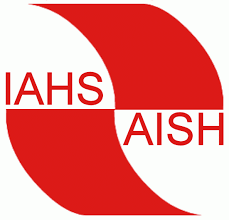|
W19 Probabilistic forecasts and land-atmosphere interactions to advance hydrological predictions |
| Convener: Christopher White | Co-Conveners: Maria-Helena Ramos , Aaron Boone , Eva Boegh , Harald Kunstmann , Koray K. Yilmaz , Richard Petrone , Kaniska Mallick , Frédérique Seyler , Thomas Skaugen , Alberto Viglione |
|
Oral programme
/ Fri, 14 Jul, 10:40–12:00
/ Room B2
Poster programme
/ Attendance Fri, 14 Jul, 12:20–13:40
/ Room B2
|
Supporting commission(s) / organisations: ICCLAS, HEPEX, GEWEX-GLASS, ICSW, ICWRS, ICRS, Panta Rhei
The roles of land surface states on short-, medium- and long-range timescales are emerging components of climate and hydrological forecasting and are increasingly becoming part of operational probabilistic forecasting systems and water management models. With horizons ranging from a few days to several seasons ahead, probabilistic forecasts are used by public sectors for flood and drought forecasting and in industries, such as agriculture, forestry, transport, energy, health, insurance, tourism and infrastructure. In developing countries, long-range seasonal forecasts are important to better allocate resources available to prevent natural disasters and to develop adaptive risk management. With these longer prediction timescales, land surface processes modelling and observation are becoming increasingly important. Given that the land surface states and processes provide the lower boundary conditions in the predictive models, representing the impacts of soil moisture, vegetation ecophysiology, and dynamics on evapotranspiration and surface energy balance is crucial for improving the prognostic capacity of the models. Additionally, improving predictability of weather extremes at short to medium ranges is essential to better assess hydrological impacts of extreme events and integrate forecasting tools to techniques addressing today’s vulnerability of society to extreme weather events.
This ICCLAS-led symposium will bring together researchers, operational forecasters, practitioners and end-users to discuss the latest developments in hydrological forecasting and their application across the water management sector. The symposium will be organised into three sessions addressing i) the role of probabilistic forecasting in scenario assessment and decision making, ii) the modelling of land surface-atmosphere interactions to quantify and improve hydrologic predictability and iii) the impact of new sensors and E/O missions in developing ‘quasi-continuous’ (space and time) surface scheme for stochastic representations. This symposium will include:
- Evaluation of probabilistic climate and hydrological forecast skill and quality, including ensemble verification;
- Understanding sources of predictability (including large-scale climate variability and modes, weather regimes and dynamics) and uncertainty (including ensemble generation and design, as well as improved modelling approaches and techniques);
- Presentation and discussion of multi-model combinations and grand ensemble forecasts in hydro-meteorological prediction;
- Investigating the value of hydrometeorological observation networks, remote sensing, and data assimilation methods to improve the representation of land surface and atmosphere states in hydrometeorological modelling;
- Discussion of the role of land–atmosphere interactions, vegetation ecophysiology, and modelling to improve hydrometeorological forecasting;
- Implementation of operational hydrological forecasting systems;
- Demonstration of ‘seamless’ hydrological forecasting on short-, medium- and long-range timescales (including downscaling and statistical processing approaches);
- Use of hydrological forecasts for water resources management and disaster risk reduction (DRR) activities in developing countries;
- Creation of user-relevant climate and hydrological information to address the needs of end-users, including the use of climate services and outlooks for risk-based decision-making.
The aims of the symposium is to better understand and improve hydrologic predictability on a range of timescales, and to promote the dissemination and practical use of hydrological forecasts to enable user communities to take advantage of ensemble forecasts and make better decisions based on them. We further aim to capitalise on the expertise of the hydrological research communities to address issues of importance to the WMO Global Framework for Climate Services (GFCS). Particularly, we invite presentations from the WWRP/WCRP Sub-seasonal to Seasonal (S2S) project that utilise the newly established S2S database, and from the HEPEX research and practice community.
